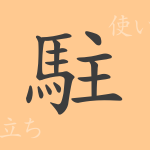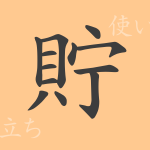The Japanese script is profoundly embedded with history, and each character carries its own story. The kanji ‘著(チョ、ジャク)’ is commonly used and rich in significance. This article delves into the unique origins, meanings, and usages of ‘著’, as well as the idioms and phrases rooted in our daily lives, exploring the cultural and historical context that shapes our language with SEO in mind.
Origins of ‘著(チョ、ジャク)’
The kanji ‘著’ traces its origins back to ancient China, initially representing the way plants take root in the ground, evolving to mean ‘to make clear’ or ‘to express’. Over time, the pictograph depicting the growth process of plants evolved into the kanji ‘著’, which continues to be used to this day.
Meanings and Usages of ‘著(チョ、ジャク)’
‘著’ encompasses meanings such as ‘to make clear’, ‘to be conspicuous’, and ‘to wear’. Its usage varies by context; for example, ‘著書(ちょしょ)’ implies ‘to author’, ‘著名(ちょめい)’ means ‘to be well-known’, ‘著す(あらわす)’ means ‘to write down’, and ‘著着(ちゃくちゃく)’ refers to ‘wearing clothes’.
Readings, Stroke Count, and Radical of ‘著(チョ、ジャク)’
The character ‘著’ has several readings and features in the Japanese language:
- Readings: On’yomi are ‘チョ’, ‘ジャク’, Kun’yomi include ‘あらわす’, ‘いちじるしい’, ‘つく’, ‘つける’
- Stroke Count: 12 strokes in total.
- Radical: 艸(‘くさかんむり’) or the grass radical.
Idioms, Phrases, and Proverbs Involving ‘著(チョ、ジャク)’
There are numerous idioms and phrases that include ‘著’, reflecting its deep meaning:
- 著作権(ちょさくけん) – Copyright, the rights granted by the creation of a work.
- 著名(ちょめい) – Widely known or famous.
- 著しい(いちじるしい) – Notable or conspicuous.
- 顕著(けんちょ) – Very clear and noticeable.
- 著者(ちょしゃ) – The author of a book or article.
Conclusion on ‘著(チョ、ジャク)’
The kanji ‘著’ has evolved over time and today remains a vital component of common Japanese kanji used in various contexts. Its rich expressive power symbolizes the depth and diversity of the Japanese language. Understanding ‘著’ is a step towards mastering the nuances of language usage, enriching our linguistic skills.

























